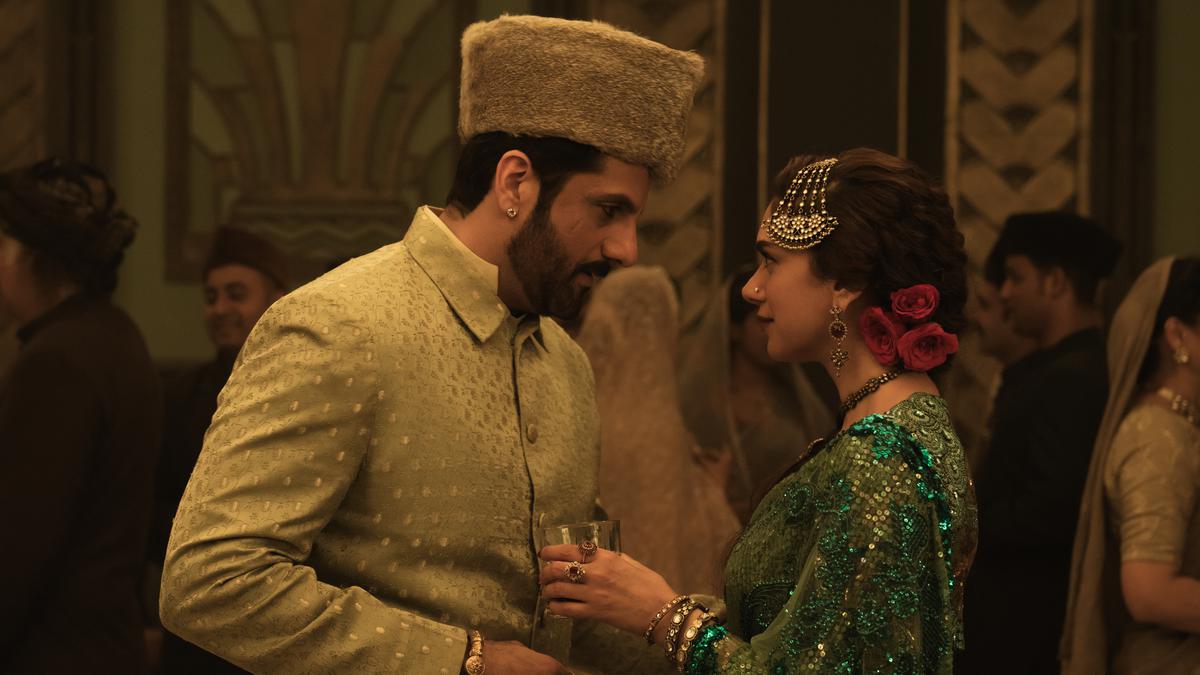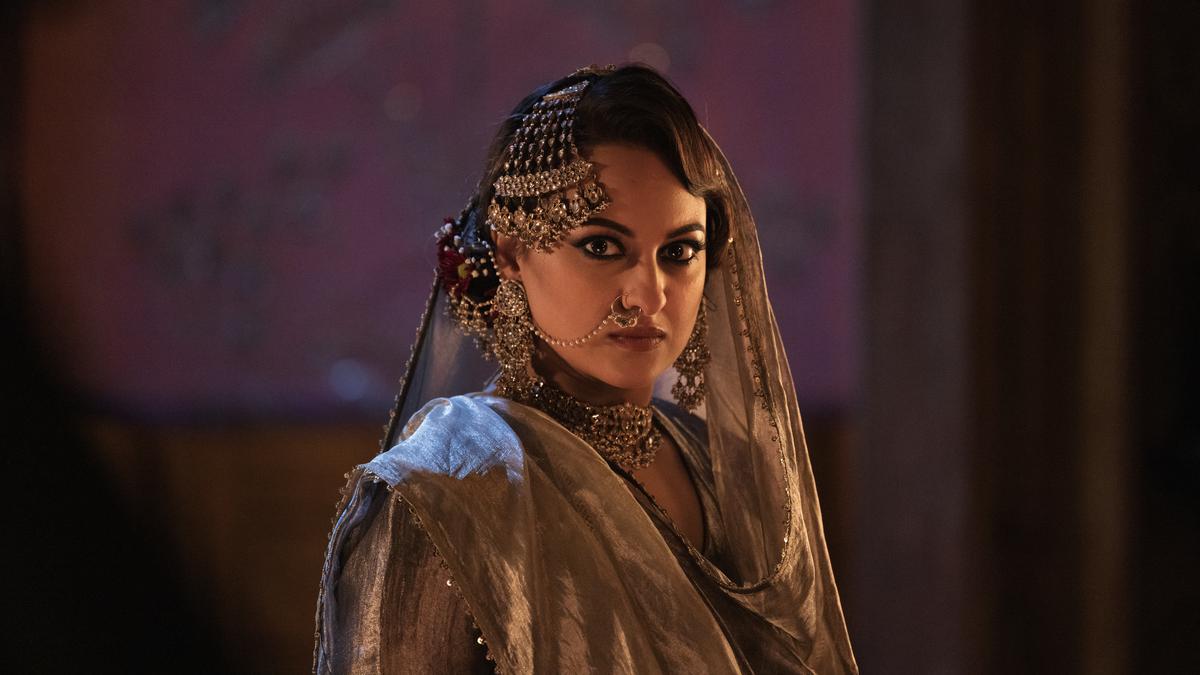Sanjay Leela Bhansali pens a billet-doux to a bygone era in his latest opus, Heeramandi: The Diamond Bazaar. Set in pre-Independence India, the streaming series reimagines the fabled eponymous neighbourhood in Lahore, where courtesans reigned supreme. Originally conceptualised by writer Moin Beg, the series evokes a past where tawaifs — female dancers and entertainers of the time — had the measure of nawabs and noblemen, wielded considerable social and political influence and contributed to the freedom movement. Even by Bhansali standards, it’s a sprawling, gorgeously mounted series — spread out over eight, hour-long episodes set to stream on Netflix from May 1.

“I had little understanding of the complexities of courtesan culture in the subcontinent before Heeramandi,” says Manisha Koirala, who fronts the show as the formidable Mallikajaan, madam of a fictitious elite brothel called Shahi Mahal. “In truth, the courtesans influenced the politics and the course of history. Their abodes were the centre of art, culture, tradition, dance and music. They were quite a powerhouse during their time.”
Manisha, of course, worked with Bhansali in his debut film, Khamoshi: The Musical (1996). Back then, the visionary director of Devdas, Bajirao Mastani and Gangubai Kathiawadi was still coming into his own as a stylist and storyteller. How was it reuniting with him at the height of his power?
“It’s been wonderful to witness Sanjay’s evolution as an artist,” Manisha says. “Even during Khamoshi, he was equally passionate, and his love for cinema and his work ethic were the same. We had made a simple, poignant film with a lot of heart. Today, I feel Sanjay’s characters are quite layered. His style of telling stories is different and grander.”
Bhansali has called Heeramandi his biggest production yet. Barring some outdoor scenes in Lucknow, the series was shot at Mumbai’s Film City on a giant three-acre set, meticulously erected by an army of 700 craftsmen. The painstaking production design is by Amit Roy and Subrata Chakraborty, while another Bhansali regular, cinematographer Sudeep Chatterjee, has shot it with Mahesh Limaye. Since filming was to continue throughout the seasons, the makers had wrapped the sets in a protective rain cover that blocked out natural light. The actors describe the experience as walking into a ‘whole new dimension’.

Sonakshi Sinha, who plays Fareedan, a rival courtesan and challenger to Mallikajaan’s throne, says she was struck by the grandness and detail of Bhansali’s vision. “Every table, curtain, candle, pillow, lampshade and cushion cover was crafted with an insane amount of detailing. There was life in every object.”
The point is reiterated by Taaha Shah Badussha, who plays an Oxford-returned heir and would-be revolutionary in the show. “The art design reflects the individual humanity of the characters. Every curtain was different for every character!”

Fardeen Khan as Wali Mohommad, Aditi Rao Hydari as Bibbo in Heeramandi
| Photo Credit:
Shamim Ansari / Netflix
A chat with Fardeen Khan
On returning to cinema after 14 years
…I consider myself fortunate that, after a long gap in my career, I am making a comeback with Heeramandi. I have never worked on any project on the scale of this show. So to be able to contribute to it and be a part of Sanjay’s grand vision was an honour. I am grateful to him for trusting me with the part of Wali Mohammed and helping me get my foot back in before the camera.
On Bhansali’s approach
…Sanjay is extremely intuitive as a filmmaker. He listens to his gut and that’s what makes him almost child-like in his approach. He captures every single nuance, be it in the blink of an eye or a gesture, in his characters. It’s not just an aesthetic or cosmetic exercise for him. He cares for emotions.
Sonakshi has played romantic, long-suffering types in period films like Lootera (2013) and Kalank (2019). In contrast to those roles, Fareedan is a rebel and an underdog, and the closest Heeramandi comes to offering an antagonist. “Fareedan is driven by rage, anger and vengeance,” Sonakshi says. “These are not good qualities but they are human qualities. Sanjay has a way of portraying his characters, especially women, as thoroughly human, emotional beings. That’s why we resonate with them.”

Sonakshi Sinha as Fareedan in ‘Heeramandi: The Diamond Bazaar’
Another fascinating figure is Aditi Rao Hydari’s Bibbojaan, who leverages her position as a courtesan to gather intel for the revolutionaries. Courtesans played a crucial if undersung role in India’s freedom struggle, from the revolt of 1857 to the Non-Cooperation Movement in the 1920s. “My mother, Vidya Rao, is a Hindustani classical singer trained in thumri and dadra,” Aditi says. “She also received a fellowship from the Ford Foundation to study gender and musical form. In her conversations, I have heard stories about the courtesans and their role in our Independence struggle.”

The language of Heeramandi is old-world Hindustani with an emphasis on its Urdu register. There is also a fair bit of Punjabi in the script. The actors had a total of four dialect coaches — Muneera Surati, Sarfaraz Arzu, Azmeri Aftab Hah and Sunita Sharma — overseeing their every inflection. “Muneera ma’am would be sitting there with her headphones, listening to us like a hawk,” Sonakshi recalls. Any nuqta we missed, she would scream out in disapproval.”
“Hindustani is not only a poetic language but also makes for beautiful communication,” Aditi adds. “We have stuck to a spoken word style. There is a weight to it but it doesn’t feel heavy.”
Sharmin Sehgal, Bhansali’s niece, has assisted him on films like Goliyon Ki Raasleela Ram-Leela (2013), Bajirao Mastani (2015) and Gangubai Kathiawadi (2022). In Heeramandi, she collaborated for the first time with her uncle as an actor. She plays Alamzeb, Mallikajaan’s younger daughter who aspires to become a poetess.
Asked about her uncle’s meticulousness, Sharmin relates a telling anecdote from the shoot of Bajirao Mastani. “We were framing a wide jib shot of 300 people standing in the peshwa’s darbar. There was one junior artiste in the crowd with his shawl held the wrong way. My uncle noticed it through the monitor and made me run down to have it fixed.”
